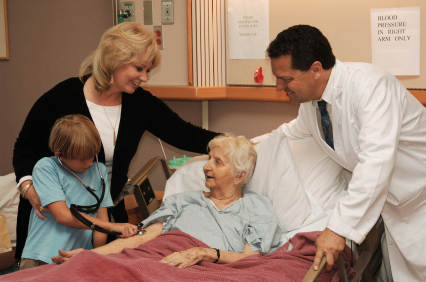 There are several different stages and types of bedsores. All of them involve a situation where sustained pressure is put on the skin. When the skin undergoes constant pressure for a long period of time, it becomes difficult or impossible for the blood to carry oxygen to cells in the pressurized area. As a result, skin and tissue in the area may begin to break down or die altogether.
There are several different stages and types of bedsores. All of them involve a situation where sustained pressure is put on the skin. When the skin undergoes constant pressure for a long period of time, it becomes difficult or impossible for the blood to carry oxygen to cells in the pressurized area. As a result, skin and tissue in the area may begin to break down or die altogether.
Bedsores are common in the nursing home setting. The advanced age and lack of mobility of many elderly patients puts them at a heightened risk of developing bedsores. Staff members at nursing home facilities are entrusted with repositioning immobilized individuals and examining them for signs of bedsores. In addition to trying to prevent elderly bedsores, it is possible to limit their severity. The severity of bedsores is based on their accompanying symptoms.
Types of Bedsores
Bedsores fall into four basic categories. The number assigned to each category reflects the severity of the bedsore damage, with four being the greatest level of damage. As a bedsores progress in severity, it becomes increasingly more difficult to correct the issue.
Stage I Bedsore
This is the first, beginning stage of a bedsore. In the case of a stage I bedsore, the skin is still intact. However, the area of the bedsore may be warmer or cooler than the surrounding skin and may be painful when touched. On individuals with light skin, stage I bedsores appear as a red blotch. This blotch does not turn white when touched. On dark skinned individuals, the skin of a bedsore may not change color, but also may appear ashen or purple.
Stage II Bedsore
A bedsore is considered to have reached stage II if it has become an open wound. In the area of a stage II bedsore, the outer layer of skin is gone. Additionally, the “dermis” which is located just under the outer layer of skin, may also be damaged or completely removed. The open wound present in stage II may be shallow and appear to be pinkish red in color.
Stage III Bedsore
A stage III bedsore has deepened into a serious wound. Skin loss in the bedsore area is generally significant and deep enough to expose some fat. The wound will resemble a crater, and there may be dead, yellowish tissue in the bottom of it. At this point, damage may be taking place down below the skin layer.
Stage IV Bedsore
An individual with a stage IV bedsore is defined by significant loss of tissue in the bedsore location. The damage is so deep that tendons, muscles and bones all may be visible at the wound site. Crusty dead tissue is often present in the bottom of the wound at this point.
Treating Elder Bedsores
Success in treating elderly bedsores depends on several factors. An individual’s health and stage of bedsore are strong indicators of the rate and success of healing. For very elderly individuals, the healing process may take quite some time, especially in cases where a stage III or stage VI bedsore is present. It can take years for a severe bedsore to heal.
In nursing home facilities, it is usually the responsibility of staff to reposition residents with bedsores, as well as clean and bandage their wounds. Proper, regular cleaning and treatment can help to quicken the healing process. However, if protocol is not followed by a negligent nursing home staff, a bedsore may get worse or become infected.
Bedsore Lawsuits
Regardless of the type of bedsore, treatment requires attention from medical professionals. In some instances, nursing home staff members fail to complete duties that will minimize bedsore risk or damage. When nursing home employees engage in negligent behavior, they may cause premature death or further bedsore complications. If negligence at a nursing home results in a loved one suffering from bedsores or related complications, it may be appropriate to file a lawsuit.
Sources:
Staff, Mayo Clinic. “Bedsores.” . Mayo Clinic, 19 3 2011. Web. 24 May 2013. http://www.mayoclinic.com/health/bedsores/DS00570/DSECTION=treatments-and-drugs
Yoshikawa, Thomas. “Infected Pressure Ulcers in Elderly Individuals.” Oxford Journal of Clinical Infectious Diseases. 35.11 (2002): 1390-1396. Web. 24 May. 2013. http://cid.oxfordjournals.org/content/35/11/1390.full
